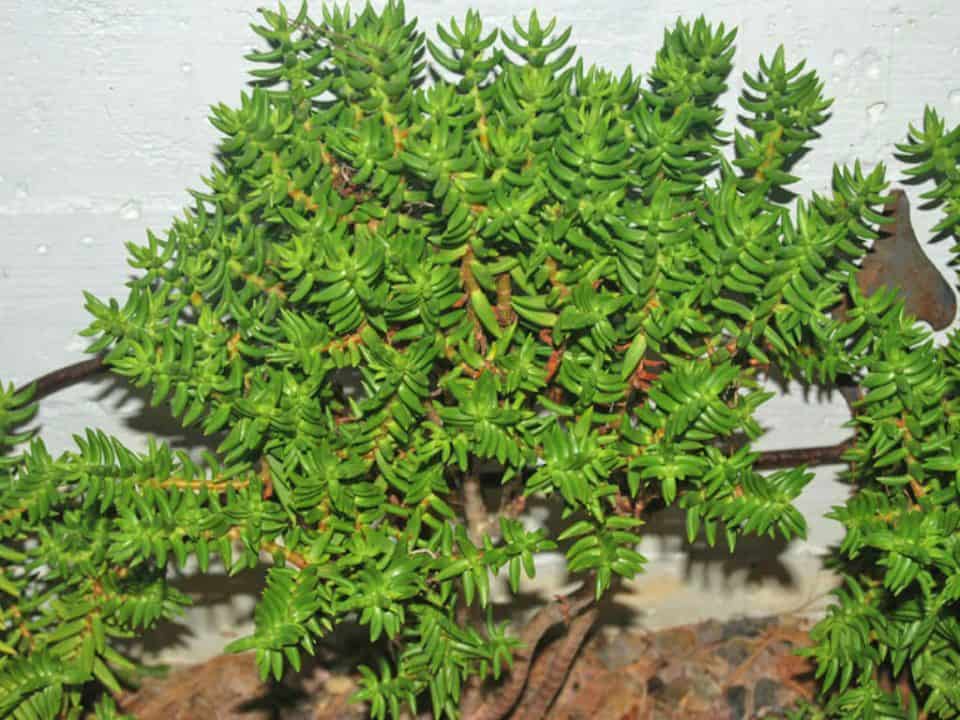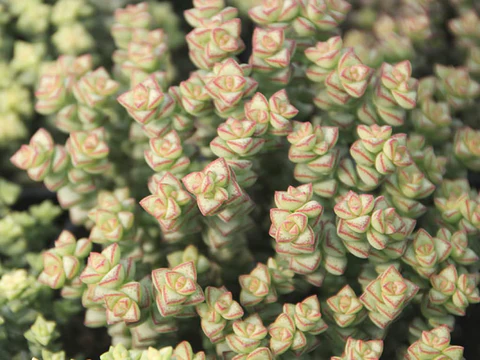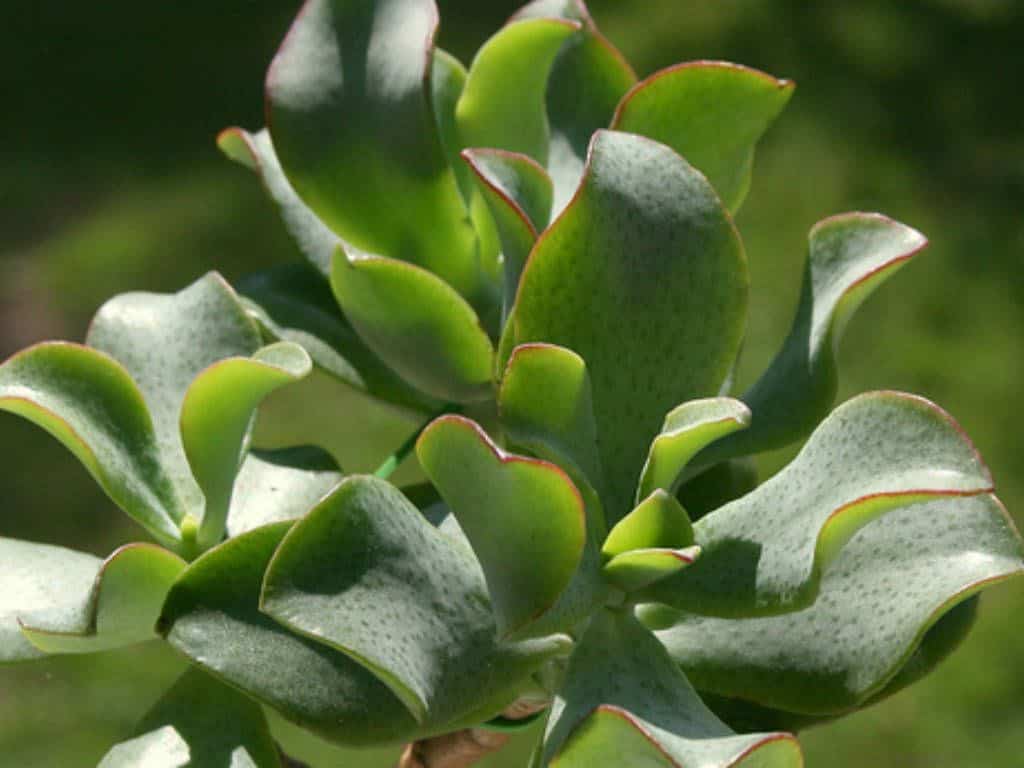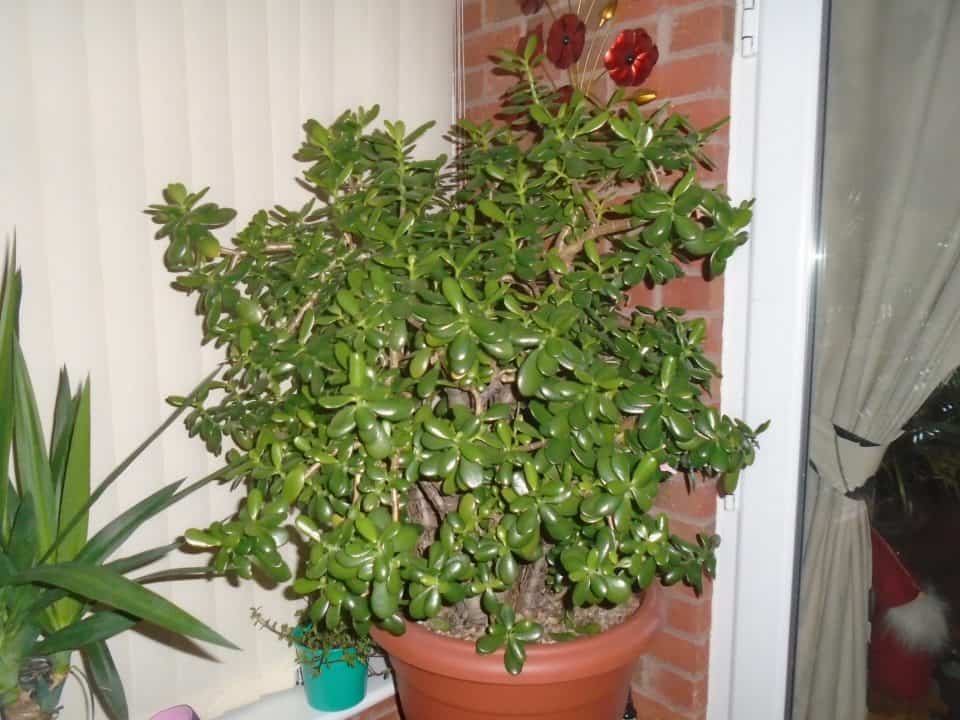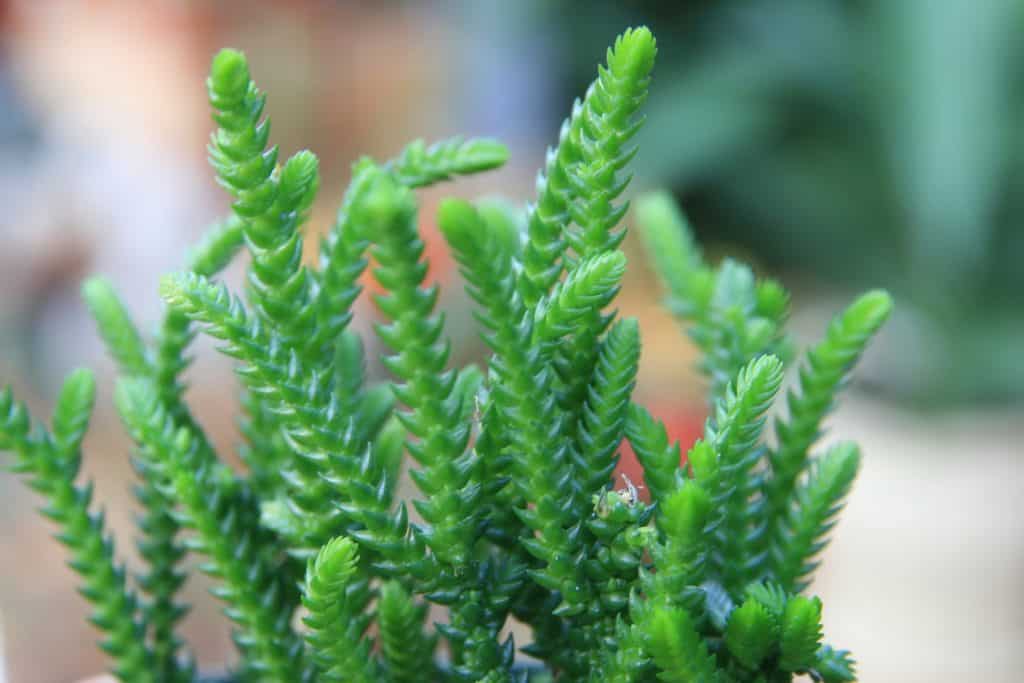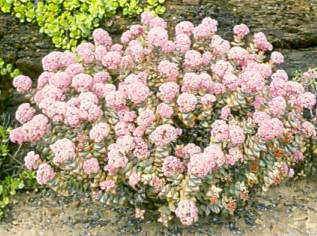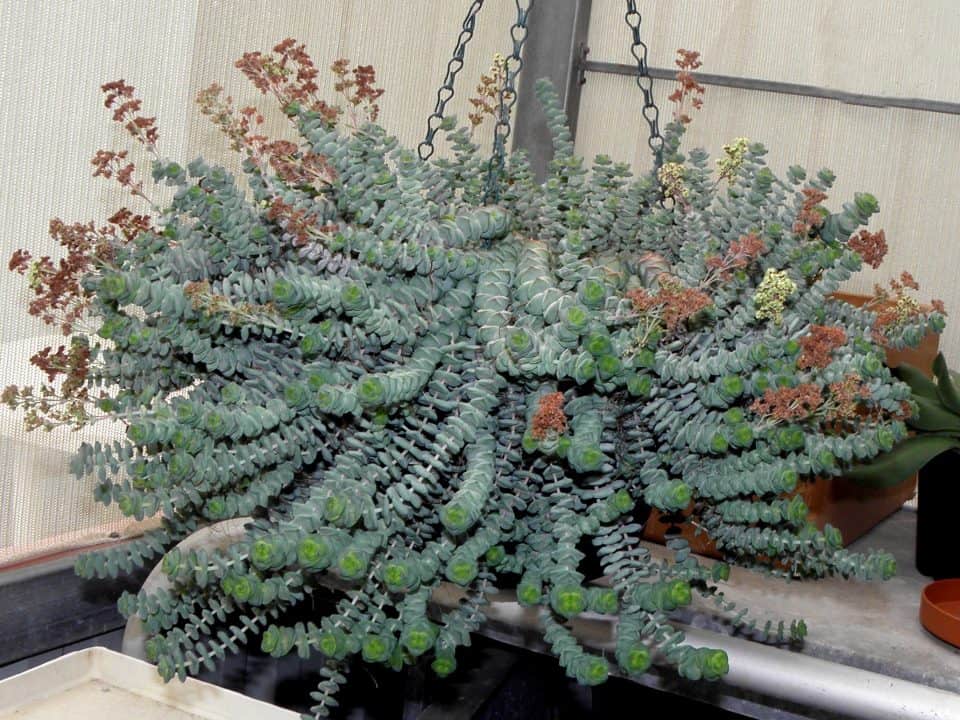Crassula tetragona, also known as the miniature pine tree succulent, mini pine tree, pine tree succulent, or just miniature pines, is a popular plant for succulent lovers due to its interesting shape and hardiness. This plant grows naturally in South Africa and can be found in the wild or in domestic cultivation, making it easy to find if you’re looking to bring this plant home with you! But what makes this succulent so special?
It is among the most popular of the crassula family due to its cutesy appearance and easy-to-grow reputation. The natural habitat of these plants is on the east coast of South Africa, specifically the Cape Provinces and KwaZulu-Natal.
If you are considering adding Crassula tetragona to your succulent collection, these care tips are perfect for you in order to keep your Crassula tetragona healthy for a very long time.
Origin and distribution
Crassula tetragona is native to South Africa and Lesotho. It is a miniature pine tree succulent that can grow up to 12 inches tall. The leaves are green and needle-like, arranged in four columns around the stem. The flowers are white and bell-shaped, blooming in winter. They are pollinated by beetles and birds.
A large colony of this plant was discovered near Swellendam, Eastern Cape Province, South Africa in 1790 by Carl Peter Thunberg. However, it has not been found since then so it may be extinct or might have been reclassified as another species altogether. There is no specimen in any herbarium for comparison, nor does its unique look match any other genus.
It would make sense for this plant to be called a miniature pine tree because its needles are spread out like branches from a miniature pine tree. And they resemble needles rather than blades because they only protrude on one side of the leaf.
Crassula tetragona propagation
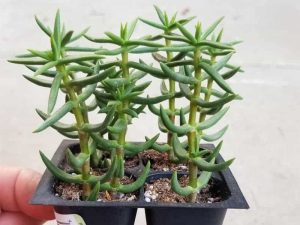
Crassula tetragona, or mini pine tree succulent, is a fun and easy plant to propagate. All you need is a sharp knife and a well-draining potting mix. Start by carefully removing a stem from the mother plant.
Make sure to get a few leaves as well. Next, allow the cuttings to callous over for a few days before potting them up. Water your new plants sparingly, as too much water can cause root rot. Plant in an area with plenty of light but filtered sun so that they don’t dry out.
The mini pine tree will thrive if planted in soil that has been fertilized prior to planting. It does not like to be overwatered and should be watered once every three weeks during the winter months.
Too much direct sunlight can burn the foliage, which should be protected from frost with mulch during cold winters. As long as the plant is watered regularly, it can withstand neglect and even periods without water!
The miniature pine tree succulent also makes an excellent houseplant. To keep it alive indoors all year round, set it on a windowsill facing south where it will receive lots of natural light.
There are many benefits to growing this hardy succulent indoors: not only will it survive under less than ideal conditions, but its evergreen nature means that you’ll have a beautiful little addition to your home’s décor all year round.
Crassula tetragona care information
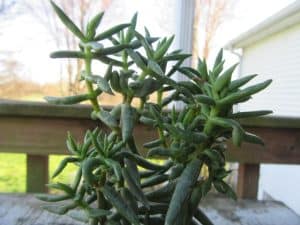
Crassula tetragona is a miniature pine tree succulent that is native to South Africa. It is a low-maintenance plant that can tolerate a wide range of conditions.
Light requirement
Crassula tetragona requires bright light to maintain its miniature size but can tolerate some shade. If the plant does not receive enough light, it will begin to stretch and become leggy. Crassula tetragona is a sun-loving plant and will do best in a south- or west-facing window. If you live in a hot climate, this succulent will appreciate some afternoon shade.
The more sunlight your plants receive, the happier they will be. Keep them away from drafts and give them plenty of water so they don’t dry out. Be careful about placing your plants near heating vents or air conditioners because extreme heat or cold can damage them severely.
Soil/potting mix
Crassula tetragona does best in a well-draining potting mix. You can either make your own by mixing together equal parts of perlite, pumice, and cactus mix. Or you can purchase a commercial succulent potting mix from your local nursery or garden center. Be sure to water your crassula tetragona regularly, especially during the hot summer months. The soil should be allowed to dry out completely between watering.
Watering
These succulents are drought tolerant and only need to be watered about once a week, or when the soil is dry to the touch. When watering, make sure to use a well-draining pot and allow the water to run through. Avoid getting water on the leaves, as this can cause them to rot.
Allow the plant to drain completely before putting it back in its pot. Make sure you’re using an appropriate size container for your plant so that the roots have room to grow without having to compete with other plants around it. The larger the pot, the less often you will have to water your plants.
Fertilizer
If you want your Crassula tetragona to thrive, you’ll need to fertilize it regularly. A good rule of thumb is to fertilize once a month during the growing season and every other month during the winter.
When choosing a fertilizer, look for one that is high in phosphorus, as this will encourage strong root growth. Apply the fertilizer around the base of the plant, being careful not to get any on the leaves, and water it well.
It’s also a good idea to wear gloves when applying fertilizer because they can be harmful if they come into contact with the skin or eyes. Don’t worry too much about under-fertilizing though; it’s better to err on the side of caution!
Temperature
The Crassula Tetragona is a miniature pine tree succulent that is native to South Africa. It can tolerate a wide range of temperatures, from hot to cold, and can even survive in frosty conditions. However, it prefers to grow in warm climates and will not do well if the temperature drops below 50 degrees Fahrenheit. If you live in a cold climate, it is best to grow this plant indoors.
Humidity
Crassula tetragona is a miniature pine tree succulent that originates from South Africa. It is an evergreen succulent that can grow up to 12 inches tall and wide. The leaves are a deep green color and are arranged in four ranks around the stem.
The flowers are white and appear in clusters at the tips of the stems. Crassula tetragona prefers dry, sunny conditions and can tolerate some drought.
The ideal humidity range is 40-60%. If the humidity drops below 40%, it will start showing signs of drooping, curling, browning, or shriveling. One way to maintain this plant’s optimal range is by misting the leaves every few days with room-temperature water. Be sure not to saturate the soil with water as this may cause root rot which can lead to the death of your plant.
Crassula tetragona pruning
The best time to prune your crassula tetragona is in the spring, after the last frost. You’ll want to remove any dead or dying leaves, as well as any that are damaged. If the plant is leggy, you can also cut back the stems to encourage new growth. Be careful not to over-prune, as this can damage the plant.
It’s recommended to only prune about a third of the branches at a time. Also, be aware that some species will send out new shoots from their roots if they’re neglected and their top growth is removed; these shoots should be gently removed.
When to repot
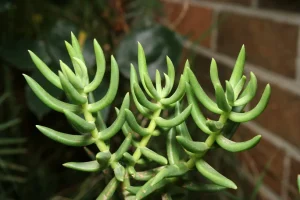
Every two to three years, your crassula tetragona will need to be repotted. The best time to do this is in the spring before the plant begins to actively grow. You’ll know it’s time to repot when you see roots coming out of the drainage holes in the pot.
To repot, simply choose a new pot that is only slightly larger than the old one and has drainage holes.
Be sure to use a potting mix designed for cacti and succulents. Carefully take the plant out of its current container, making sure not to pull too hard on the roots as they may come loose from their current home. Use potting mix as needed to fill up any empty space around the roots.
After planting your crassula tetragona back into its new container, water thoroughly until water comes through the drainage hole at the bottom of the pot.
Dormancy/Winter rest
Crassula tetragona enters dormancy in winter and may lose some leaves. This is normal and nothing to worry about as the plant adjusts to shorter days and cooler temperatures. To help your plant through its winter rest, water it less often and keep it in a cool, bright spot.
Once spring arrives, you can resume your regular watering schedule and watch your crassula tetragona grow and thrive. During this time of year, don’t be afraid to use fertilizer on your plant! The nutrients will help your plant grow back its foliage from all that dormant time.
Crassula tetragona flower & fragrance
The Crassula tetragona produces small, white flowers that have a sweet fragrance. This plant is drought tolerant and does not require much water to survive. It is an excellent choice for those who are new to succulents or for those who do not have much space for plants.
Growth rate
The Crassula tetragona grows at a moderate to slow rate. In optimal conditions, it can grow up to 2 inches per year. However, if the conditions are not ideal, the growth rate will be much slower. When grown indoors, the Crassula tetragona will usually only grow to about 6 inches tall. Outdoors, it can grow up to 12 inches tall.
Toxicity
All parts of Crassula tetragona are poisonous if ingested, and the sap can cause skin irritation. The symptoms of poisoning include nausea, vomiting, and diarrhea. If you suspect that your pet has ingested this plant, please contact your veterinarian immediately.
USDA hardiness zones
Crassula tetragona thrives best in USDA hardiness zones 10 and 11. It is the perfect addition to a desert garden or rock garden. The miniature pine tree succulent can be found at nurseries, botanical gardens, and online suppliers.
Pests and diseases
Although succulents are generally resistant to pests and diseases, there are a few that can cause problems for your crassula tetragona. These include mealybugs, scale insects, and root rot. Mealybugs are small, white insects that feed on the sap of plants.
They can be controlled with regular applications of insecticidal soap. Scale insects are small, brownish-black insects that suck the sap from plants. They can be controlled with horticultural oil or neem oil. Root rot is a fungal disease that causes damage to the roots. It may be treated by applying a fungicide containing chlorothalonil.
